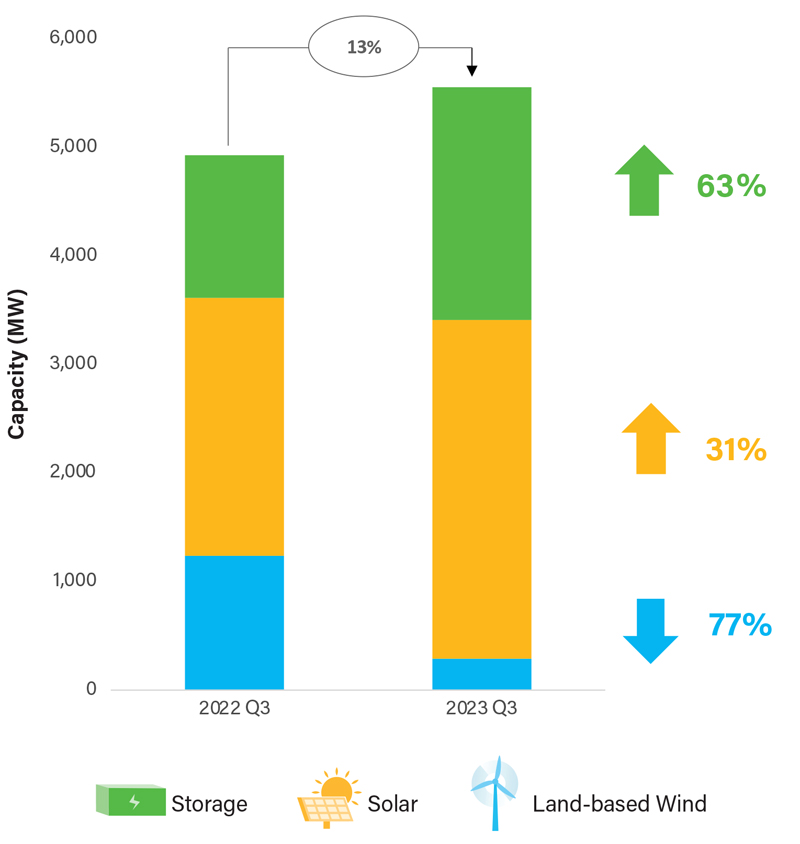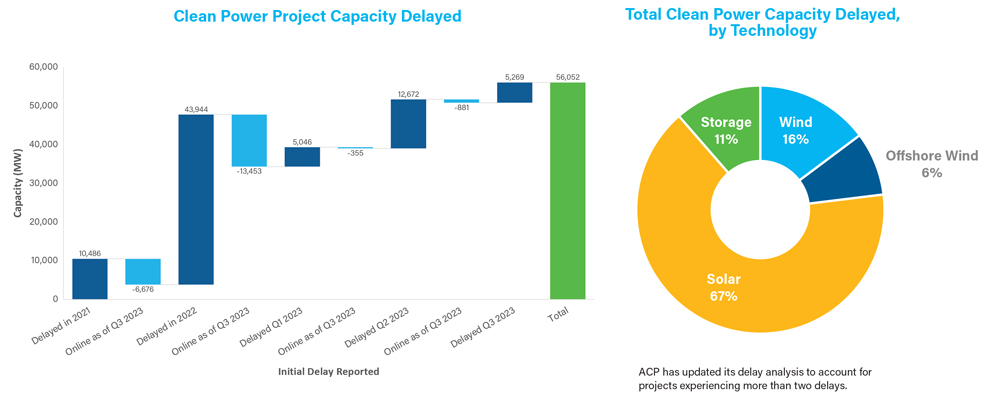Exelon utilities have scored some big wins in the past few weeks, beginning with PJM’s selection on Oct. 31 of project proposals for a competitive transmission solicitation, including an $850 million package of projects for the utility and its subsidiaries, CEO Calvin Butler announced during a Nov. 2 third-quarter earnings call.
The package includes projects for Baltimore Gas and Electric (BGE), PECO, Pepco and Delmarva Power & Light, with completion dates scheduled for 2029 and 2030, timeframes that “extend beyond the current guidance range,” Butler said. “It provides another good indication of the trends in place and degree of work that the grid will require, well into the future.”
Other forward-looking developments include Exelon’s active role in two of the seven regional hydrogen hubs the Department of Energy announced Oct. 13, Butler said. Commonwealth Edison (ComEd) is part of the team working on the Midwest hub, while PECO and Pepco will be similarly involved in the mid-Atlantic hub. (See DOE Designates Seven Regional Hydrogen Hubs.)
ComEd and PECO also were named to receive $50 million and $100 million, respectively, as part of DOE’s $3.46 billion Grid Resilience and Improvement Program, announced Oct. 18. A total of 58 projects received grants from the program, which is funded by the Infrastructure Investment and Jobs Act. (See DOE Announced $3.46B for Grid Resilience, Improvement Projects.)
ComEd will use the money to deploy “next-generation technologies” that will support wider adoption of electric vehicles and solar, while PECO’s grant will go to grid hardening in “vulnerable areas” of the utility’s service territory to help keep the power on during extreme weather events.
“The federal support is critical to supporting an affordable and equitable transition,” Butler said. “The need for transmission expansion, the investment in new energy supply and the ever-increasing need for more resilient grids all highlight the impact that an economy that is increasingly dependent on electricity will have on our investment plan.
“The energy transformation will last decades, not years, which is why we are confident that investment opportunities will continue to strengthen and lengthen our rate base growth.”
The PJM selection is a case in point. The grid operator opened the window for the solicitation to expand transmission to meet new demand being created by the rapid expansion of data centers in Northern Virginia, as well as the impact of the pending retirements of fossil fuel generation, such as Maryland’s Brandon Shores coal-fired plant.
While Butler did not provide details on the Exelon projects, PJM said it is recommending a mix of new substations and transmission as well as upgrades to existing facilities. The recommendations will go back to PJM’s Transmission Expansion Advisory Committee before being sent to the Board of Managers for final approval.
Looking at local grid improvements, Chief Financial Officer Jeanne Jones highlighted a recently completed grid upgrade on Maryland’s Eastern Shore, the 11-mile East New Market to Cambridge project, which installed new state-of-the-art steel poles to bolster local reliability. The new poles can withstand 120-mph hurricane force winds, she said.
Tackling Multiyear Rate Plans
The connection between transmission buildout, the energy transition and Exelon’s rate base was a central theme throughout the call, as Butler and Jones gave a rundown of the six rate cases the company’s utilities have before regulators in Illinois, New Jersey, Maryland, Delaware and the District of Columbia.
In ComEd’s rate case, a recent proposed order from an Illinois administrative law judge (ALJ) recognized “that meeting the ambitious electrification and decarbonization goals set by [the state’s] groundbreaking Climate and Equitable Jobs Act will require ComEd to make significant investments,” Butler said.
But the ALJ set a return on equity below the national average, he said. “It does not allow for prudent capitalization of the business.”
According to Butler, a recommendation from staff at the Illinois Commerce Commission (ICC) set an 8.9% rate of return, which the ALJ upped to 9.28%. ComEd’s proposal calls for a 10.5% rate of return in 2024, rising incrementally to 10.65% in 2027, according to a report in Crain’s Chicago Business.
A final order is expected in December, and ComEd will continue to make its case before the ICC, Butler said. Jones noted that the ComEd filing is its first run at a multiyear rate plan and framed the ALJ’s proposed order as “just another data point in the process,” given the number of variables at play in multiyear plans.
Four of the six rate cases — for BGE, Pepco Maryland, Pepco DC and ComEd — are for first-time multiyear plans, she said.
The Numbers
Butler noted that despite a mild winter and late summer storms with 110-mph wind gusts that knocked out power to 1.3 million Exelon customers, the utility’s earnings were still on track with its 2023 predictions.
The utility’s third quarter GAAP net income was $700 million ($0.70/share), while non-GAAP adjusted net income was $671 million ($0.67/share).
Butler said the utility is narrowing its guidance for 2023 as a whole to $2.32 to $2.40/share.

